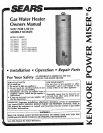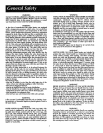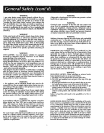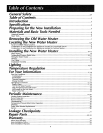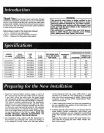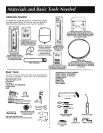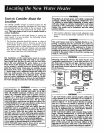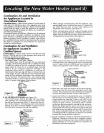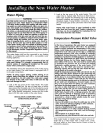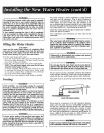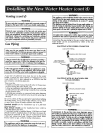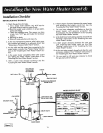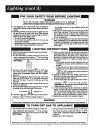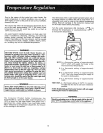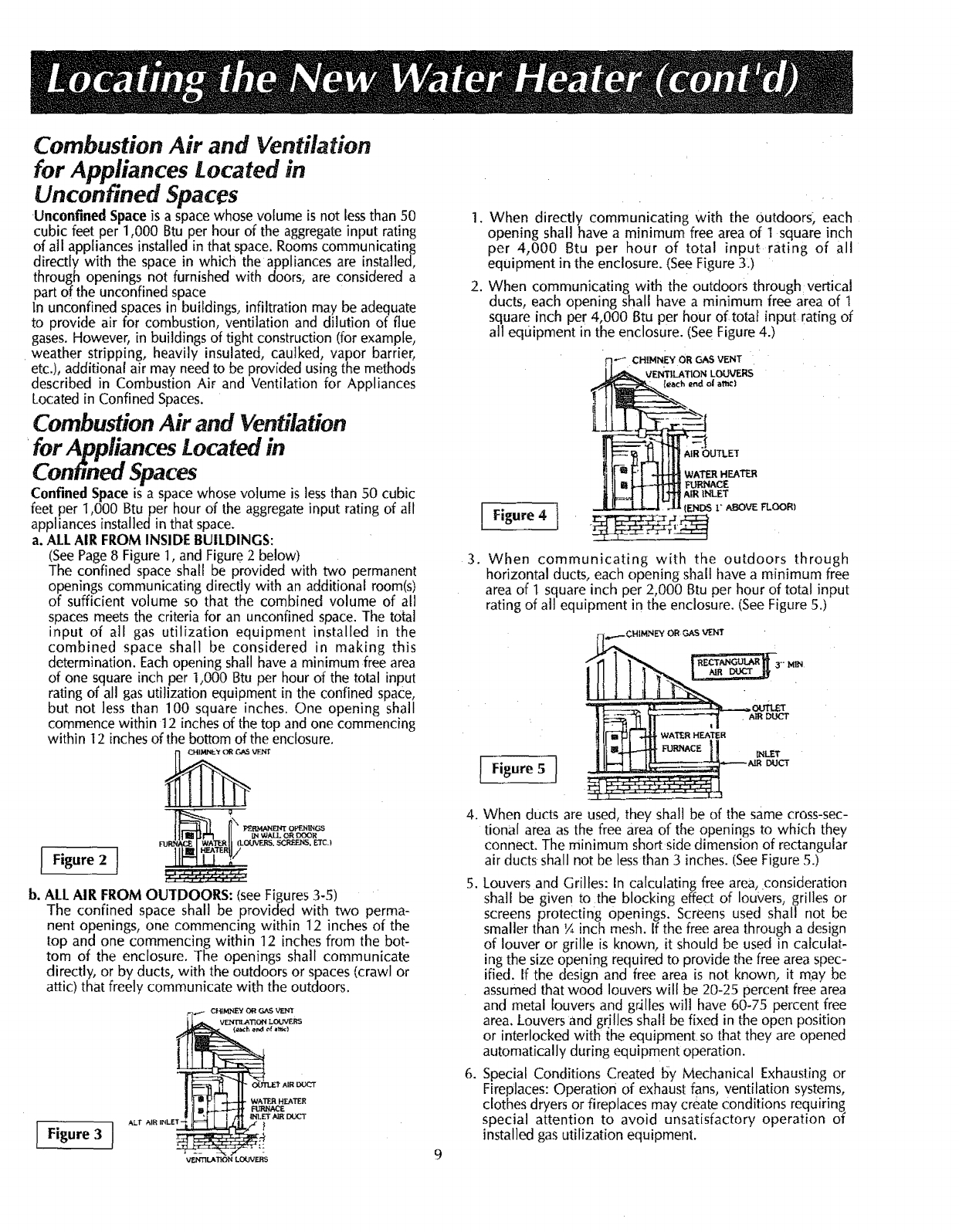
Combustion Air and Ventilation
for Appliances Located in
Unconfined Spaces
-UnconfinedSpaceis a spacewhose volume is not lessthan 50
cubic feet per 1,000 Btuper hour of the aggregateinput rating
of all appliances installed in that space.Roomscommunicating
directly with the space in which the appliances are installed,
through openings not furnished with doors, are considered a
part of the unconfined space
in unconfined spacesin buildings, infiltration maybe adequate
to provide air for combustion, ventilation and dilution of flue
gases.However, in buildings of tight construction (for example,
weather stripping, heavily insulated, caulked, vapor barrier,
etc.), additional air may need to be provided usingthe methods
described in Combustion Air and Ventilation for Appliances
Locatedin Confined Spaces.
Combustion Air and Ventilation
'for Applia_ncesLocated in
Confined Spaces
Confined Spaceis a spacewhose volume is lessthan 50 cubic
feet per 1,000 Btu per hour of the aggregateinput rating of all
appliances installed in that space.
a. ALLAIR FROMINSIDE BUILDINGS:
(SeePage8 Figure1, and Figure.2 below)
The confined spaceshall be provided with two permanent
openingscommunicating directly with an additional room(s)
of sufficient volume so that the combined volume of all
spacesmeetsthe criteria for an unconfined space. The total
input of all gas utilization equipment installed in the
combined space shall be considered in making this
determination. Eachopening shall have a minimum free area
of one square inch per 1,000 Btu per hour of the total input
rating of all gas utilization equipment in the confined space,
but not less than 100 square inches. One opening shall
commencewithin t2 inchesof the top and one commencing
within 12 inchesofthe bottom ofthe enclosure.
FUR._.F. I WAT_II (LOUVERS,_._F.F_S. Er¢._
b. ALLAIR FROMOUTDOORS: (see Figures 3-5)
The confined space shall be provided with two perma-
nent openings, one commencing within 12 inches of the
top and one commencing within 12 inches from the bot-
tom of the enclosure. The openings shall communicate
directly, or by ducts, with the outdoors or spaces (crawl or
attic) that freely communicate with the outdoors.
1Figure 3 I
If
!_==_ '] _ WAT'F_ HFJ_-TER
Jliln kg_l---tt _E
VE@'nLA]ION LOLtV_S
1. When directly communicating with the Outdoors, each
opening shall have a minimum free area of I square inch
per 4,000 Btu per hour of total input rating of all
equipment in the enclosure. (See Figure 3.)
2. When communicating with the outdoors through vertical
ducts, each opening shall have a minimum free area of 1
square inch per 4,000 Btu per hour of total input rating of
all equipment in the enclosure. (See Figure 4.)
Figure4 1
Q'_" CHIMNEY OR GAS VENT
iJ_,_ VE_T,U_IONLOU'._RS
each end ol atilt)
U'rLET
!l= Yi 4t4fl WATERH_a_
II]1=,_ _cE
11_-4 I ILlllA_RIN_T
Jti IEND_ 1" ABOVE FLOOR)
3. When communicating with the outdoors through
horizontal ducts, each opening shah have a minimum free
area of 1 squareinch per 2,000 Btu per hour of total input
rating of all equipment in the enclosure. (SeeFigure5.)
I_EY OR GAS VENT
INLET
4. When ducts are used, they shall be of the same cross-sec-
tional area as the free area of the openings to which they
connect. The minimum short side dimension of rectangular
air ducts shall not be less than 3 inches. (See Figure 5.)
5. Louvers and Grilles: In calculating free area, consideration
shall be given to the blocking effect of Iou_,ers, grilles or
screens protecting openings. Screens used shall not be
smaller than ¼ inch mesh. ffthe free area through a design
of louver or grille is known, it should be used in calculat-
ing the size opening required to provide the free area spec-
ified. If the design and free area is not known, it may be
assumed that wood louvers will be 20-25 percent free area
and metal louvers and grilles will have 60-75 percent free
area. Louvers and grilles shah be fixed in the open position
or interlocked with the equipment so that they are opened
automatically during equipment operation.
6. Special Conditions Created by Mechanical Exhausting or
Fireplaces: Operation of exhaust fans, ventilation systems,
clothes dryers or fireplaces may create conditions requiring
special attention to avoid unsatisfactory operation of
installed gas utilization equipment.



